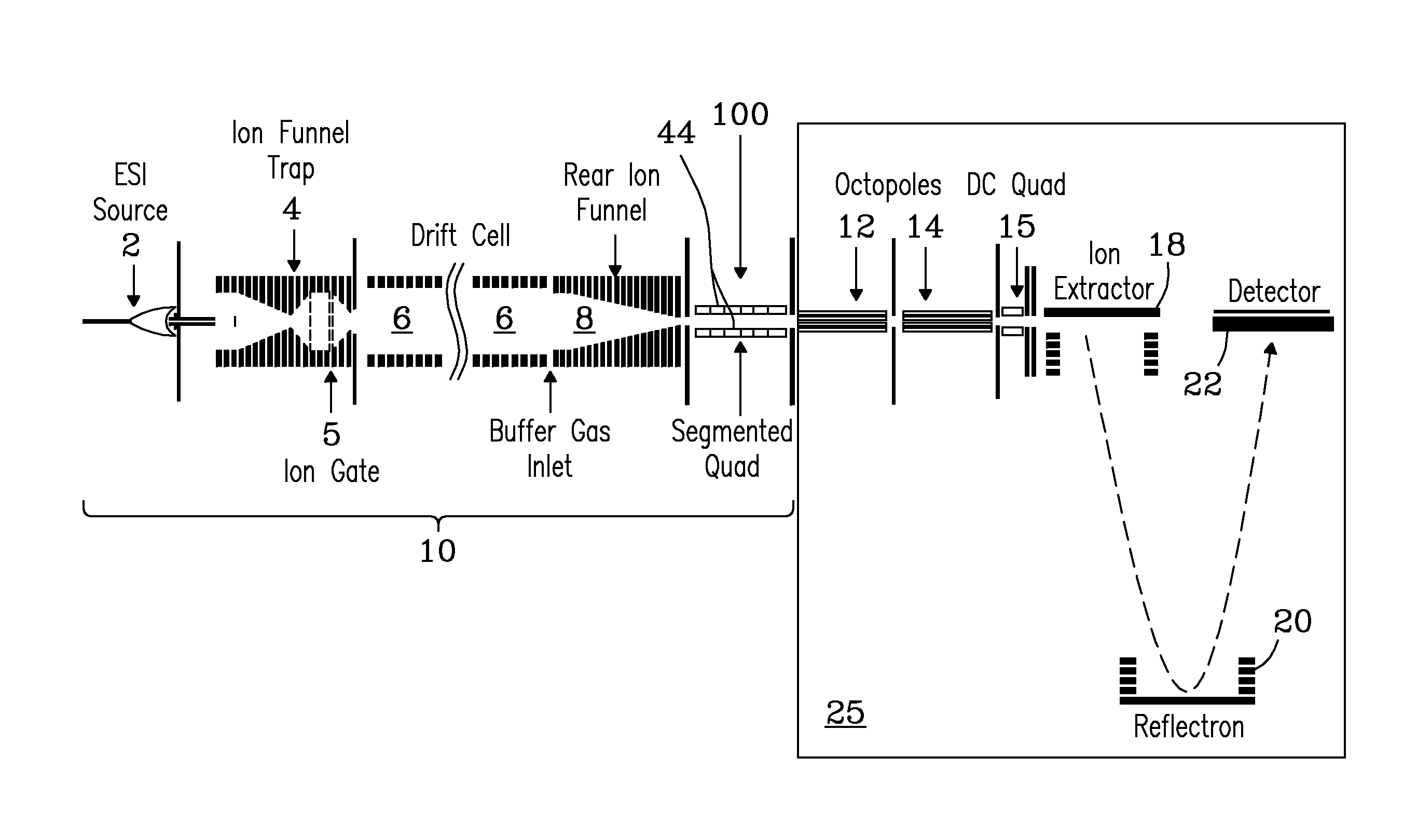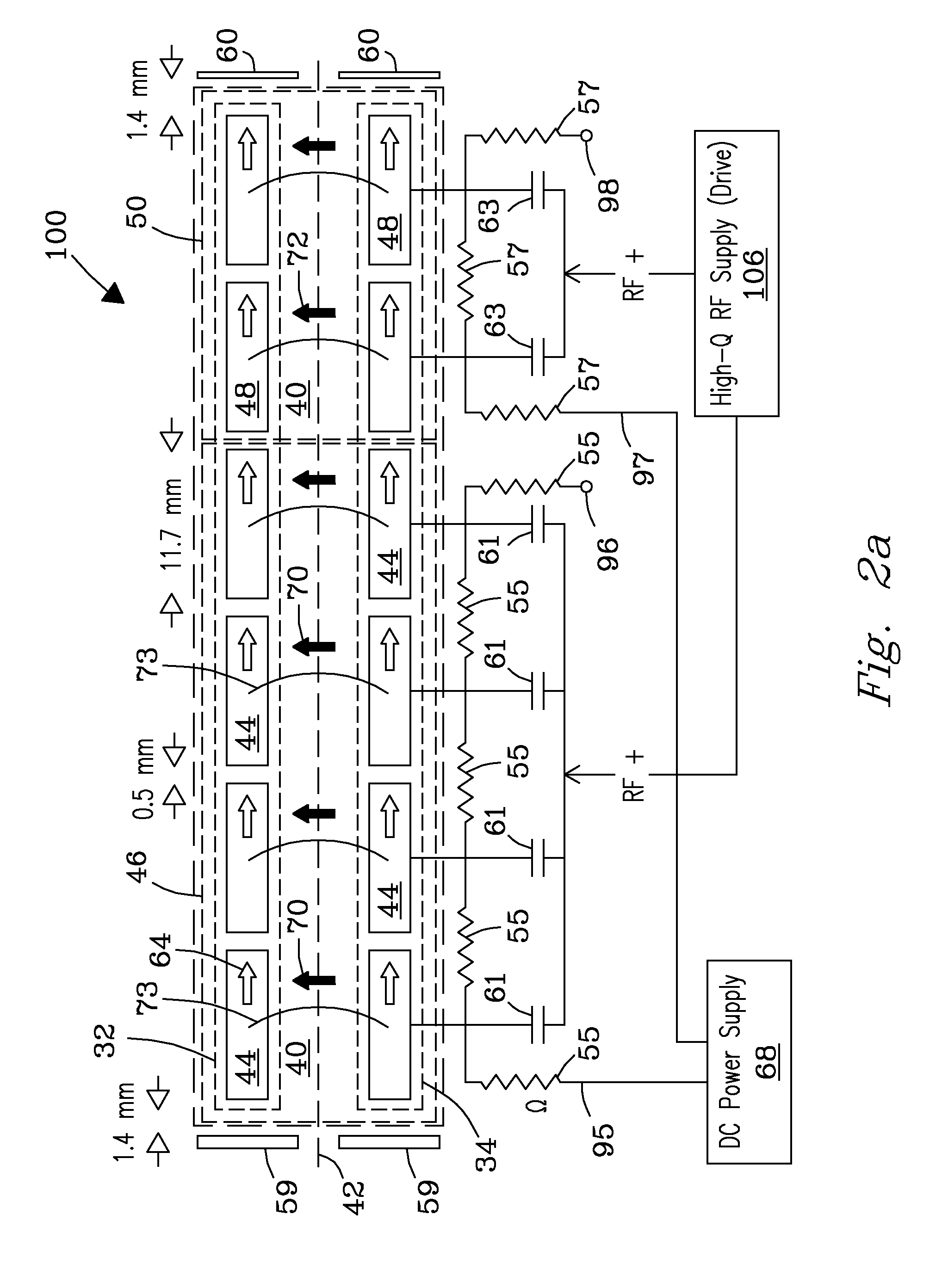System and method for collisional activation of charged particles
a technology of charged particles and collisional activation, which is applied in the field of collisional activation systems and methods for charged particles, can solve the problems of increased radial oscillation of precursor ions, poor fragmentation and collection efficiency of fragment ions produced in rf-fringing fields at the quadrupole entrance, and inability to easily lose fragment ions, etc., to achieve efficient ion transmission, enhance the impact velocity of ions, and enhance the fragmentation of ions
- Summary
- Abstract
- Description
- Claims
- Application Information
AI Technical Summary
Benefits of technology
Problems solved by technology
Method used
Image
Examples
example
CID Mode
[0065]Collision Induced Dissociation (CID) in accordance with the invention has been demonstrated in the interface between an ion mobility spectrometer (IMS) and a time-of-flight mass spectrometer (TOF MS). To deconvolute the IMS-multiplexed CID-TOF MS raw data, informatics approaches effectively using information on the precursor and fragment drift profiles and mass measurement accuracy (MMA) were developed. It was shown that radial confinement of ion packets inside an RF-only segmented quadrupole operating at a pressure of ˜200 mTorr and, having an axial DC-electric field minimizes ion losses due to defocusing and scattering, resulting in high abundance fragment ions which span a broad m / z range. Efficient dissociation at high pressure (˜200 mTorr) and high ion collection efficiency inside the segmented quadrupole resulted in CID efficiencies of singly-charged ions comparable to those reported with triple quadrupole mass spectrometers. The modulation of the axial DC-electr...
PUM
 Login to View More
Login to View More Abstract
Description
Claims
Application Information
 Login to View More
Login to View More - R&D
- Intellectual Property
- Life Sciences
- Materials
- Tech Scout
- Unparalleled Data Quality
- Higher Quality Content
- 60% Fewer Hallucinations
Browse by: Latest US Patents, China's latest patents, Technical Efficacy Thesaurus, Application Domain, Technology Topic, Popular Technical Reports.
© 2025 PatSnap. All rights reserved.Legal|Privacy policy|Modern Slavery Act Transparency Statement|Sitemap|About US| Contact US: help@patsnap.com



